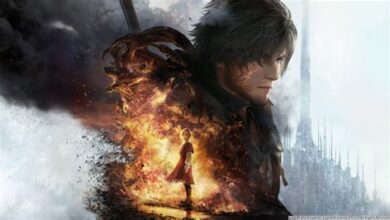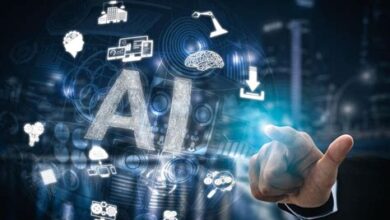The Intersection of Technology and Art

Explore the history of tech and art collaboration, innovative digital art creation, impact of technology on traditional art, virtual reality’s influence on exhibitions, and artificial intelligence in artistic expression.In today’s digital age, the worlds of technology and art are increasingly intersecting, leading to a myriad of innovative and thought-provoking creations. From the advent of digital art to the incorporation of virtual reality and artificial intelligence, the relationship between technology and art has never been more dynamic. This blog post will explore the various facets of this intersection, delving into the history of tech and art collaboration, the innovations in digital art creation, the impact of technology on traditional art, the influence of virtual reality on art exhibitions, and the role of artificial intelligence in artistic expression. By examining these key subheadings, we hope to shed light on the exciting and transformative ways in which technology is shaping the art world, and vice versa. Join us as we embark on a journey through the fascinating marriage of technology and art.
History of tech and art collaboration
In the history of art, technology has always played a significant role in shaping the way artists create and showcase their work. From the invention of the camera to the rise of digital art, the collaboration between tech and art has been evident throughout the ages.
One of the first instances of tech and art collaboration can be seen in the invention of the camera obscura in the 11th century. This early form of a camera allowed artists to trace the images projected through the pinhole onto a surface, giving them a new perspective on capturing reality.
As time progressed, the development of digital technology has revolutionized the way art is created and exhibited. With the rise of tools like Photoshop and Illustrator, artists have been able to manipulate and create artwork in ways that were previously unimaginable. Additionally, advancements in projection technology have allowed for immersive art installations that blend the physical and digital worlds.
Innovations in digital art creation
Digital art creation has seen significant advancements in recent years, with the development of innovative tools and technologies that have revolutionized the way artists express themselves. One of the most notable innovations in digital art creation is the advent of digital painting software, which allows artists to create stunning and realistic artworks with the use of advanced brushes, color palettes, and layers. This technology has enabled artists to experiment with different styles and techniques, pushing the boundaries of traditional art.
Another groundbreaking innovation in digital art creation is the rise of 3D modeling and animation software, which has opened up a whole new world of possibilities for artists to bring their imagination to life. With the help of these tools, artists can create intricate and complex 3D models, characters, and environments, enhancing their storytelling and visual communication skills.
Furthermore, the integration of artificial intelligence in digital art creation has paved the way for a new era of creativity, allowing artists to explore new ways of expression and experimentation. AI-powered tools and algorithms can generate art pieces, provide creative suggestions, and even assist in the creation process, offering artists new insights and inspiration for their work.
Impact of technology on traditional art
Technology has undeniably impacted the world of traditional art, bringing about both challenges and opportunities for artists. One major way in which technology has influenced traditional art is through the use of digital tools and software. Many artists now use digital drawing tablets and computer programs to create their artwork, replacing traditional mediums such as paint and canvas. This shift in tools has allowed for greater flexibility and experimentation in artistic expression.
Another significant impact of technology on traditional art is the way in which art is showcased and marketed. The internet and social media platforms have provided artists with new avenues for displaying and selling their work. Artists can now reach a global audience and connect with potential buyers without the need for traditional art galleries. This has democratized the art world, allowing artists of various backgrounds and styles to thrive in the digital space.
Furthermore, technology has also influenced the conservation and preservation of traditional art. Museums and institutions now use advanced techniques such as digital scanning and 3D printing to replicate and preserve delicate artworks. This has revolutionized the way in which art is archived and studied, making it more accessible for future generations.
Virtual reality’s influence on art exhibitions
The intersection of virtual reality technology and art exhibitions has revolutionized the way we experience and interact with art. With the advancements in VR technology, art galleries and museums have been able to offer immersive and interactive experiences to their visitors. Through the use of virtual reality headsets, patrons are able to step into a virtual world where they can engage with art in a whole new way. This has opened up endless possibilities for artists and curators to create innovative and boundary-pushing exhibitions that push the boundaries of traditional art spaces.
Virtual reality has also allowed for a wider audience to engage with art exhibitions from anywhere in the world. With the use of VR technology, individuals who may not have the means to visit a physical gallery can still experience the beauty and wonder of an art exhibition. This has led to a democratization of art, making it more accessible to people of all backgrounds and walks of life. Additionally, VR technology has allowed for the preservation and documentation of art exhibitions, ensuring that they can be experienced for years to come.
Furthermore, the influence of virtual reality on art exhibitions has pushed artists to explore new mediums and techniques in their work. Through the integration of VR technology, artists have been able to create interactive and immersive artworks that challenge traditional concepts of space and perception. As a result, the art world has seen a surge of experimentation and innovation, with artists pushing the boundaries of what is possible within the realm of virtual reality art exhibitions.
Artificial intelligence in artistic expression
Artificial intelligence (AI) has rapidly expanded its influence into the realm of artistic expression, revolutionizing the way we create and consume art. Through the use of complex algorithms and neural networks, AI has the capability to generate unique and innovative pieces of artwork that challenge traditional notions of creativity and authorship.
One of the most intriguing aspects of AI in artistic expression is its ability to collaborate with human artists, providing them with new tools and techniques to experiment with. This collaboration has blurred the lines between man and machine, giving rise to a new era of artistic possibilities.
Furthermore, AI has the potential to democratize the art world, making it more accessible to a wider audience. With the help of AI-generated art, individuals who may not have had the opportunity to create or appreciate art can now participate in the creative process and experience the beauty of artistic expression.





